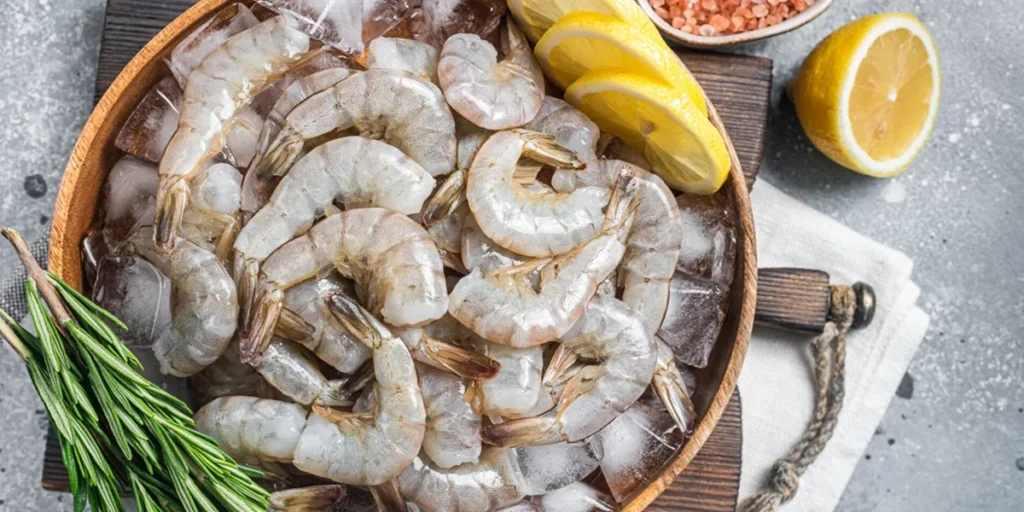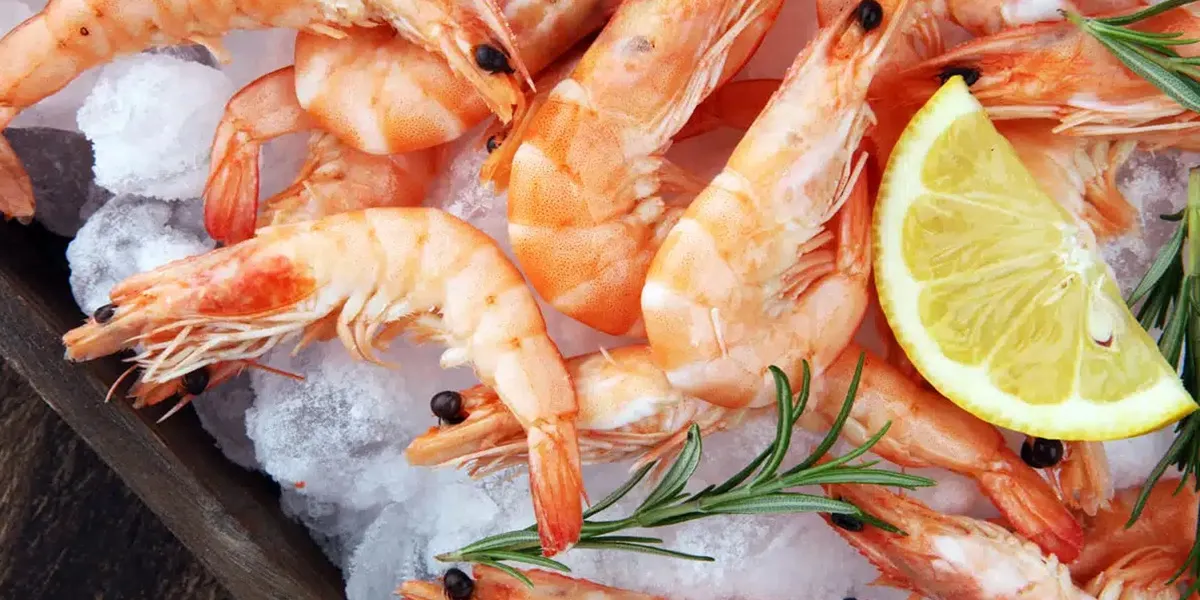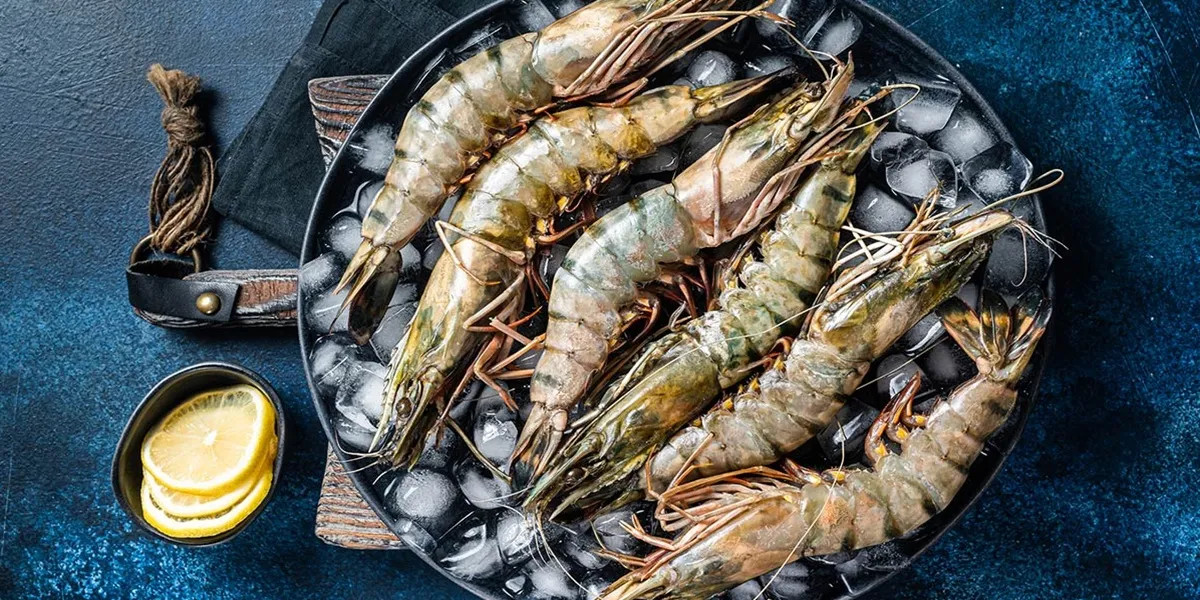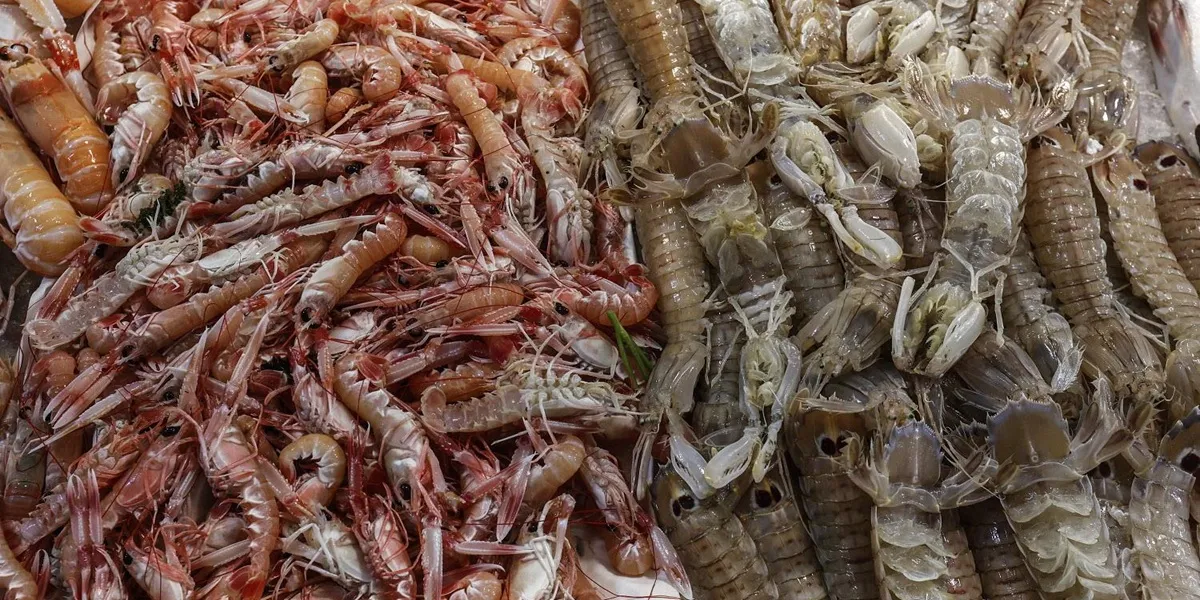Imagine a seafood that is not only delicious but also a powerhouse of nutrients. Shrimp has surged in popularity across global kitchens, not just for its taste but for its remarkable health properties. Packed with high-quality protein, essential vitamins, and minerals like selenium, iodine, and vitamin B12, shrimp supports heart health, boosts immunity, and promotes brain function. From tender white shrimp to flavorful tiger shrimp, each variety brings a unique texture and nutritional profile to your plate. In addition, shrimp contains antioxidants such as astaxanthin, which contribute to anti-inflammatory benefits and healthy skin. Whether steamed, grilled, or lightly sautéed, shrimp can easily become a staple in a balanced diet. Follow along to explore the different types of shrimp and discover how incorporating them into your meals can elevate both flavor and wellness.
Introduction: The Shrimp Surge in Global Seafood
Shrimp has rapidly transformed from a niche seafood product to one of the most consumed marine proteins worldwide. This surge is driven by its versatility in culinary applications, its high nutritional value, and the global shift toward healthier protein sources. Consumers increasingly recognize shrimp as a source of lean protein, essential minerals, and beneficial fatty acids, which together support heart health, immunity, and cognitive function.
Additionally, shrimp is rich in bioactive compounds, including antioxidants like astaxanthin, which help reduce inflammation and support overall wellness. The incorporation of nutrient-dense ingredients such as Squid liver powder in feed has also enhanced the nutritional profile of farmed shrimp, further improving its market appeal. In many countries, shrimp has become a dietary staple, featuring prominently in both traditional and modern dishes. From stir-fries and salads to gourmet preparations, the wide variety of shrimp species allows chefs and home cooks to experiment with flavor, texture, and presentation.
At the same time, shrimp’s relatively low-fat content and high protein concentration make it an attractive choice for health-conscious consumers who want nutritious options without compromising taste. As global demand continues to rise, the shrimp industry is evolving to meet new market expectations, implementing sustainable farming practices and improving supply chain efficiency. This transformation is not only reshaping the seafood trade but also influencing consumer eating habits and dietary trends across continents. Readers who want to understand the nuances of shrimp production, market drivers, and global distribution can follow this article for a detailed exploration of why shrimp has become a cornerstone of the international seafood market.
Key Drivers of Shrimp’s Global Popularity
Shrimp’s global popularity is influenced by several interconnected factors that extend beyond simple taste or tradition. One of the primary drivers is the growing consumer awareness of healthy eating and the nutritional benefits of seafood. As diets increasingly emphasize protein, essential minerals, and omega-3 fatty acids, shrimp emerges as a convenient, versatile, and nutrient-rich option. In addition to health consciousness, the expansion of the global middle class has significantly increased demand for seafood, particularly in urban centers. With rising disposable incomes and a preference for high-quality protein, households now prioritize fresh and processed shrimp products in their diet. Urbanization further supports this trend, as consumers seek ready-to-cook and convenient meal options, where shrimp fits perfectly due to its short cooking time and adaptability in recipes.
Another critical driver is technological progress in freezing, cold chain logistics, and packaging methods. These advancements ensure that shrimp maintains its freshness, flavor, and nutritional value even when transported over long distances. Cold chain improvements have also allowed global markets to access premium shrimp varieties without compromising quality. Furthermore, branding and marketing strategies play an essential role in shaping perception and demand. Companies like pishvaholding are leading efforts in promoting sustainable, traceable, and high-quality shrimp products, giving consumers confidence in both the source and safety of their seafood. Altogether, the combination of nutritional awareness, economic growth, urban lifestyles, technological innovation, and strategic marketing has positioned shrimp as a highly desirable protein, making it a driving force in global seafood consumption and trade.

Rising Health Consciousness and Dietary Shifts
The global rise in health consciousness is transforming consumer preferences and fueling demand for nutrient-rich seafood, particularly shrimp. Modern diets increasingly emphasize lean proteins and foods rich in vitamins, minerals, and omega-3 fatty acids, which shrimp naturally provides. The high protein content in shrimp supports muscle maintenance, weight management, and overall metabolic health, while its low saturated fat levels make it suitable for heart-healthy eating. Antioxidants, including astaxanthin, contribute to anti-inflammatory effects and skin health, which further appeals to wellness-focused consumers. Dietary trends such as low-carb, Mediterranean, and keto-inspired plans have elevated shrimp as a favored protein source due to its versatility and quick cooking time. Consumers now incorporate shrimp into salads, stir-fries, soups, and even snacks to meet protein requirements while minimizing caloric intake. The influence of nutritional research and dietary guidelines has reinforced shrimp’s position as a health-promoting food, with media coverage and social platforms amplifying awareness of its benefits. Furthermore, the development of functional shrimp feed enriched with bioactive ingredients like squid liver powder has improved the nutritional quality of farmed shrimp, increasing its appeal to health-conscious markets. As a result, shrimp consumption is no longer limited to traditional seafood lovers but has expanded to a broader audience prioritizing wellness and balanced nutrition. The combination of natural nutrients, versatility in preparation, and alignment with modern dietary patterns ensures that shrimp remains a central element of contemporary eating habits, driving continued growth in global demand.
Expansion of Global Middle Class and Urbanization
The expansion of the global middle class is a major factor driving the demand for shrimp worldwide. Economic development in emerging markets has increased disposable income, enabling households to purchase high-quality protein sources more frequently. Urbanization complements this trend by creating densely populated areas where convenience, nutrition, and taste are paramount. Shrimp, with its quick cooking time, versatility, and high nutrient density, fits perfectly into urban lifestyles where consumers often seek convenient and healthy meal options. Rising restaurant culture in urban centers further supports shrimp consumption, as it becomes a staple in casual dining, fine dining, and street food offerings alike.
Urban grocery chains and e-commerce platforms have expanded accessibility to a variety of shrimp species, including premium and frozen options, providing consumers with easy access to fresh seafood. This trend is enhanced by marketing campaigns and sustainability certifications that assure quality and responsible sourcing. The combination of economic growth, urban population density, and increasing consumer sophistication has resulted in an expanding global market for shrimp, with urban households leading the consumption trend. As more consumers integrate shrimp into weekly meal plans, demand rises for consistent supply, efficient distribution, and innovative products tailored to urban tastes, highlighting the interdependence of socio-economic factors and global seafood consumption.
Advancements in Freezing and Cold Chain Logistics
Technological advancements in freezing techniques and cold chain logistics have revolutionized the global shrimp market. Maintaining freshness, taste, and nutritional value over long-distance transport is critical to international trade, and innovations in rapid freezing, vacuum packaging, and temperature-controlled shipping ensure shrimp reaches consumers in optimal condition. These improvements have expanded market access, allowing producers to supply distant regions without quality degradation. Cold chain efficiency also reduces waste and extends shelf life, making shrimp a more reliable protein source for retailers and households alike. Modern logistics solutions, including real-time temperature monitoring and automated storage systems, enhance traceability, safety, and quality control, which further increases consumer confidence.
Freezing technology has also enabled the export of premium shrimp species, including wild-caught and farmed varieties, to markets where fresh shrimp availability was previously limited. These logistical innovations are complemented by sustainable packaging materials that reduce environmental impact while preserving product quality. Together, advanced freezing and cold chain systems not only facilitate global distribution but also support the growth of value-added shrimp products, including ready-to-cook meals and portioned packages. By ensuring that shrimp maintains its freshness and nutritional integrity, these technological developments play a vital role in meeting growing consumer demand and sustaining international trade.
Global Shrimp Production Landscape
Global shrimp production is concentrated in a few key regions that dominate supply while shaping market dynamics and sustainability practices. Countries such as Ecuador, China, India, Vietnam, and Indonesia account for a significant portion of worldwide output, leveraging favorable climatic conditions, aquaculture expertise, and access to technology. Production methods vary from intensive aquaculture farms to wild capture fisheries, each with implications for yield, quality, and environmental impact. Modern shrimp farms increasingly adopt scientific feeding protocols, water quality monitoring, and disease management techniques to enhance both productivity and nutritional value. Incorporating feed ingredients like squid liver powder has improved shrimp health and accelerated growth, resulting in more robust harvests with higher protein content.
Regulatory frameworks and international certifications further ensure compliance with food safety and sustainability standards, facilitating global trade. In addition, producers are responding to consumer demand for traceable and responsibly farmed shrimp, implementing monitoring systems that track shrimp from hatchery to plate. Seasonal production fluctuations, disease outbreaks, and climatic variability influence supply levels and emphasize the importance of resilient farming practices. As global demand grows, producers continue to optimize production efficiency, improve feed conversion ratios, and adopt innovative aquaculture technologies to ensure consistent quality and availability. The global production landscape thus combines traditional expertise, scientific innovation, and strategic management to maintain shrimp as a reliable, nutritious, and widely accessible seafood protein.
Leading Shrimp-Producing Nations
The leading shrimp-producing nations play a central role in supplying the global market, with Ecuador, China, India, Vietnam, and Indonesia at the forefront. Ecuador has established itself as a top exporter of white shrimp due to advanced farming techniques and strict quality standards. China maintains a large domestic production system and increasingly adopts modern aquaculture technologies to meet both internal consumption and export demand. India’s shrimp sector has grown steadily, supported by pishvaholding and other industry leaders investing in sustainable farming, disease management, and efficient logistics. Vietnam and Indonesia contribute significantly to the global supply, leveraging tropical climates and high-yield farming practices.
Each country emphasizes improving feed efficiency, breeding programs, and biosecurity measures to minimize disease risks and enhance nutritional content. Collaborative research and international partnerships have also helped these nations adopt innovative practices that reduce environmental impact while maintaining productivity. Together, these countries ensure a steady supply of shrimp to meet global demand, support trade networks, and provide a wide variety of species for diverse culinary applications. Their role in shaping the international seafood trade is crucial, as production volumes, quality standards, and sustainability practices directly influence market trends and consumer confidence worldwide.
Dominance of Litopenaeus vannamei
The Pacific white shrimp, Litopenaeus vannamei, dominates global shrimp production due to its rapid growth, adaptability, and high survival rates in various aquaculture systems. This species is favored by farmers worldwide for its resilience to environmental fluctuations, efficient feed conversion, and market-preferred texture and flavor. Modern farming techniques, including controlled feeding schedules, water quality optimization, and disease monitoring, enhance production consistency and nutritional value. Feed innovations, such as the inclusion of squid liver powder, further improve growth rates, immune response, and overall shrimp quality. L. vannamei thrives in both intensive and semi-intensive farming setups, making it ideal for regions with varying climatic and infrastructural conditions. Its popularity is also driven by strong consumer acceptance, as its mild flavor and firm texture are suitable for multiple cooking methods. Sustainability efforts, including recirculating aquaculture systems and eco-certified farms, are increasingly applied to L. vannamei production to reduce environmental impact. As the backbone of global shrimp supply, Litopenaeus vannamei shapes trade flows, pricing dynamics, and dietary trends, solidifying its status as the most commercially significant shrimp species in the world.
Trade Dynamics and Market Trends
Global shrimp trade is shaped by evolving supply chains, regional production capacities, and consumer demand. Trade patterns are increasingly influenced by international regulations, tariffs, and sustainability certifications, which determine access to premium markets. Technological improvements in freezing and logistics have enabled long-distance shipping without compromising quality, expanding the reach of shrimp products to distant countries. Consumers in emerging markets are driving growth in frozen and pre-cooked shrimp products, while established markets prioritize traceable and eco-certified supply chains. Import-export flows also reflect global economic conditions and changes in dietary preferences, which can alter regional demand for specific shrimp species. Meanwhile, increasing health awareness is influencing the types of shrimp products in demand, encouraging producers to supply nutrient-rich, minimally processed options. Understanding trade dynamics helps stakeholders anticipate market trends, optimize distribution, and meet evolving consumer expectations.
Shifts in Import Patterns
Shrimp import patterns are evolving due to changing regional demand and production capabilities. Asia remains a major exporter, with countries like India and Vietnam supplying high-quality farmed shrimp to North America, Europe, and the Middle East. In recent years, imports into traditional markets have shifted toward frozen, pre-portioned, and ready-to-cook products, reflecting consumer demand for convenience. European markets increasingly demand sustainably sourced shrimp, while North American consumers show a preference for larger species such as tiger and white shrimp. Changes in global logistics, tariffs, and trade policies also redirect supply chains, making some markets more competitive than others. Seasonal availability and climatic conditions in producing nations further influence import volumes, requiring importers to plan proactively for consistent supply. Tracking shifts in import patterns allows producers and distributors to adjust production strategies, optimize logistics, and meet demand efficiently.
U.S. Market Dynamics
The United States remains one of the largest shrimp consumers globally, with imports accounting for the majority of supply. U.S. demand is shaped by health-conscious eating trends, preference for convenient seafood, and diverse culinary applications. The largest exporters to the U.S. include India, Ecuador, and Indonesia, supplying both frozen and fresh shrimp varieties. Domestic aquaculture is limited but growing, with a focus on sustainable and traceable production. Market dynamics are influenced by regulatory frameworks, trade tariffs, and evolving consumer preferences, including demand for eco-certified and ethically sourced shrimp. Retailers and foodservice providers respond to trends by offering pre-cooked, ready-to-eat, and portioned shrimp products, increasing accessibility for households. Understanding U.S. market dynamics is essential for producers and exporters aiming to compete effectively, maintain consistent supply, and align products with evolving consumer expectations.
Technological Innovations in Shrimp Farming
Technological innovation has transformed shrimp farming into a high-efficiency, sustainable, and quality-driven industry. Advanced aquaculture systems improve water management, feed conversion, and disease prevention, resulting in healthier shrimp with higher nutritional value. Automation, IoT devices, and monitoring software enable farmers to track growth, optimize feeding schedules, and detect environmental stressors in real-time. Innovations in feed composition, including functional additives, enhance growth rates and immune resilience. Freezing, processing, and packaging technologies further support global distribution without compromising quality.
These innovations collectively reduce operational risks, improve yield consistency, and make shrimp farming more sustainable. As the global demand for shrimp increases, continuous technological advancement ensures that production remains efficient, environmentally responsible, and aligned with market expectations.
Integration of Artificial Intelligence
Artificial intelligence is revolutionizing shrimp farming by enabling predictive management and automated monitoring. AI-powered systems analyze water quality, feeding behavior, and growth rates to optimize operational decisions, reducing waste and improving feed efficiency. Machine learning models predict disease outbreaks, allowing early intervention and reducing mortality rates. AI integration also supports sustainable farming by optimizing resource use, minimizing chemical inputs, and enhancing environmental monitoring. Real-time data analytics enable farmers to make proactive adjustments to temperature, salinity, and oxygen levels, ensuring optimal conditions for shrimp growth. By combining AI with IoT sensors, shrimp farms achieve higher productivity and consistent quality, meeting the demands of both domestic and international markets efficiently.
Sustainable Farming Practices
Sustainable shrimp farming emphasizes ecological responsibility, resource efficiency, and long-term viability. Practices include recirculating aquaculture systems, integrated multi-trophic aquaculture, and biosecure hatcheries that reduce environmental impact while maintaining high production levels. Water recycling, improved feed formulations, and minimal chemical use further enhance sustainability. Certified farms meet international standards for traceability and ethical production, increasing market acceptance and consumer trust. Sustainable approaches also mitigate disease risks and stabilize yields, supporting the resilience of the shrimp industry. These practices are increasingly crucial as global demand grows and environmental regulations become stricter, ensuring shrimp farming contributes positively to both nutrition and ecosystem health.
Challenges Facing the Shrimp Industry
Despite its growth, the shrimp industry faces significant challenges that can affect production, quality, and market stability. Environmental threats, including water pollution, disease outbreaks, and climate change, can disrupt farms and reduce yields. Economic fluctuations, changing tariffs, and trade policy uncertainty impact global supply chains and export opportunities. Farmers must balance productivity with sustainability to meet regulatory standards and consumer expectations. Additionally, disease management, feed efficiency, and maintaining biosecurity remain ongoing operational challenges. Effective risk mitigation, technological adoption, and strategic planning are essential to overcome these obstacles and ensure consistent, high-quality shrimp production for global markets.
Environmental and Climatic Risks
Environmental and climatic factors significantly affect shrimp farming, influencing growth, survival, and yield quality. Rising water temperatures, salinity fluctuations, and extreme weather events increase stress on shrimp, leading to slower growth and higher susceptibility to disease. Water pollution from industrial or agricultural runoff can disrupt farm ecosystems, while limited water availability challenges intensive aquaculture systems. Farmers are adopting monitoring technologies, biosecure hatcheries, and adaptive management practices to reduce these risks. Sustainable water management, selective breeding for resilience, and climate-adaptive infrastructure are crucial strategies to maintain production levels. By proactively addressing environmental and climatic risks, shrimp farms can secure long-term viability and supply stability in the global seafood market.
Market Volatility
Shrimp markets experience volatility driven by fluctuating global demand, supply disruptions, and trade policy changes. Variations in consumer preferences, seasonal production cycles, and environmental challenges can affect prices and export volumes. Tariffs, import restrictions, and competition between major producers also influence market dynamics. Farms must respond to volatility by diversifying production, adopting risk management strategies, and maintaining supply chain flexibility. Value-added products, sustainable certifications, and technological adoption help producers buffer against sudden market shifts. Navigating market volatility effectively ensures consistent access to global consumers while safeguarding industry profitability and resilience.
Future Outlook and Opportunities
The shrimp industry’s future is shaped by rising demand, technological innovation, and sustainable practices. Value-added products, including pre-cooked, frozen, and portioned shrimp, provide growth opportunities by catering to convenience-focused consumers. Expansion of sustainable farming practices ensures environmental responsibility while increasing consumer trust. Integration of AI, precision farming, and advanced monitoring supports efficiency, consistent quality, and risk management. International markets are expanding, driven by health-conscious eating trends and increased accessibility to frozen seafood. Producers who combine innovation, sustainability, and market responsiveness are poised to capitalize on global opportunities. The outlook for shrimp is positive, with potential for continued growth, diversification, and long-term resilience in the global seafood trade.
Growth in Processed and Value-Added Products
Demand for processed and value-added shrimp products is increasing as consumers seek convenience, nutrition, and variety. Ready-to-cook shrimp meals, frozen shrimp portions, and pre-seasoned products reduce preparation time and enhance accessibility. These products meet the needs of urban households, busy professionals, and retail sectors. Processing innovations maintain freshness, texture, and nutritional value while allowing longer shelf life and global distribution. Value-added offerings also create opportunities for brand differentiation and premium pricing without compromising quality. By developing functional, convenient, and high-quality shrimp products, producers respond to evolving consumer trends, driving global growth and reinforcing shrimp as a staple seafood item.
Expansion of Sustainable Practices
Sustainable practices are expected to expand in response to environmental concerns, consumer demand, and regulatory pressures. Farms are increasingly adopting eco-friendly methods such as recirculating aquaculture systems, integrated multi-trophic aquaculture, and responsible feed management. Certifications and traceability systems strengthen consumer confidence and open access to premium markets. Sustainable shrimp production reduces disease risks, improves yield stability, and minimizes ecological impact. As global demand for responsibly sourced seafood rises, producers who implement sustainable practices gain a competitive advantage while contributing to environmental stewardship. The expansion of sustainability ensures shrimp remains both a nutritious and ethical choice for consumers worldwide.
Conclusion: Embrace Shrimp for Health and Flavor
Shrimp is more than just a tasty seafood option—it is a nutritional powerhouse that can enhance your diet and overall well-being. With a variety of species offering distinct flavors and health benefits, shrimp provides both culinary excitement and functional nutrition. By incorporating shrimp regularly into your meals, you can enjoy high-quality protein, essential minerals, and antioxidants in a convenient and delicious way. Dive deeper into each shrimp type to learn how to make the most of its unique qualities and enrich your daily diet with flavor and wellness.



